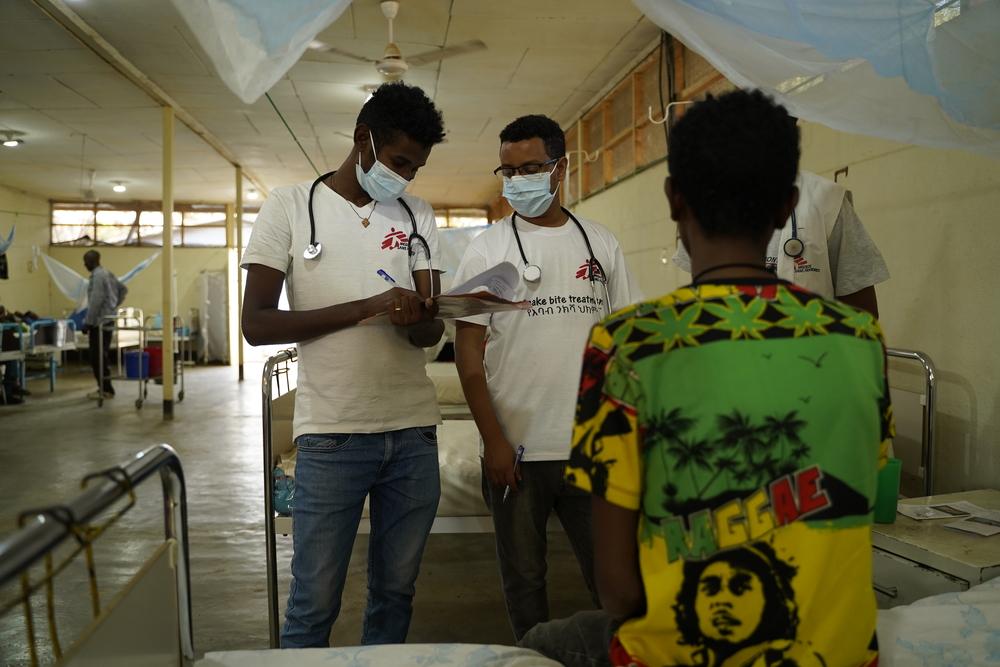1. 20 years of life saving treatments
MSF is working in seven out of twelve regions of Ethiopia. 2023 marks twenty years of MSF providing life-saving services for the treatment of kala azar in Abdurafi, Amhara region. As well as treating snakebites, HIV treatment and provision of other essential healthcare services are also given to migrant workers and people living in the local communities.
2. First kala azar assessment in Abdurafi in 2002
Abdurafi is a small town in northwest Ethiopia, 10 kilometers away from Sudan’s border. An initial assessment carried out in October 2002 showed that kala azar was contributing to the high morbidity and mortality rates observed in the area.
3. 2003 marks the start of the project
Abdurafi’s kala azar treatment centre was very busy from the start. In 2003, MSF treated 759 kala azar patients (263 in the first month of January 2003 only).We also saw significant numbers of patients with HIV, tuberculosis (TB), and malaria, plus malnourished children in need of nutrition support.
4. Anteneh Alemu, MSF tractor driver, one of the first team members
Anteneh is a tractor driver who has been working with MSF in Abdurafi for 20 years since the start of the project.He has seen many changes during this time. At the very beginning of the project, he used to drive the MSF staff to many remote areas, having to cross very rough terrains and rivers.
Before the start of the project, he used to carry patients on his back to take them to health centers.
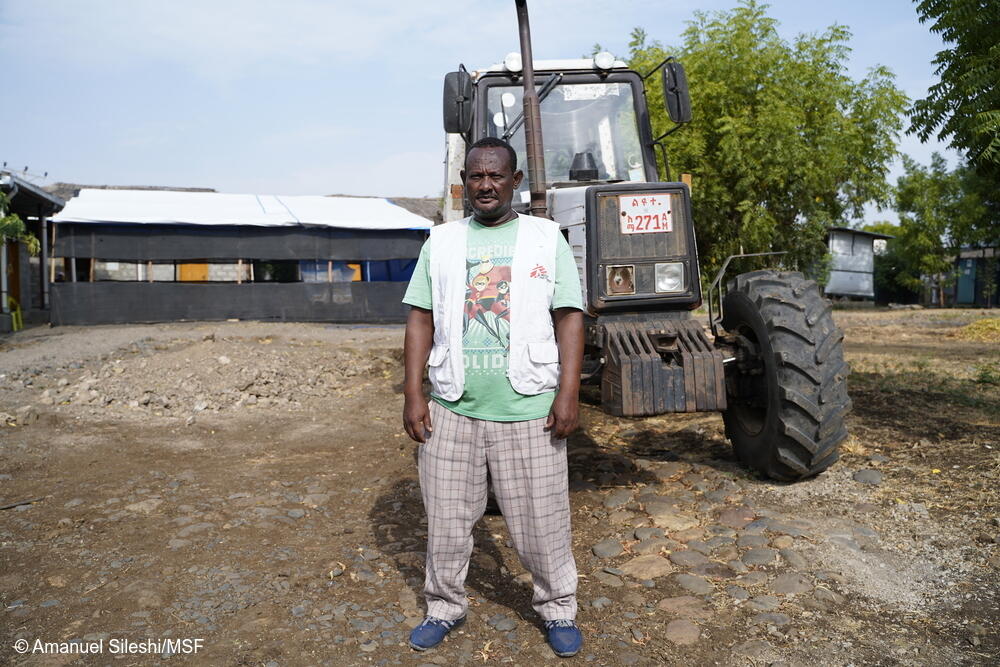 Ateneh Alemu is 44 years old and has been working for MSF in Abdurafi since 2004. He drives the tractor and remembers the situation before MSF started offering health services.
Ateneh Alemu is 44 years old and has been working for MSF in Abdurafi since 2004. He drives the tractor and remembers the situation before MSF started offering health services.5. What is kala azar?
Kala azar, also known as visceral leishmaniasis, is a neglected disease, caused by a parasite transmitted to humans by the bite of an infected female sand fly. It is endemic in 76 countries, and it is the second deadliest parasitic disease in the world after malaria.
6. Fatal if not treated
Kala azar affects the internal organs, particularly the liver, spleen, and bone marrow. If it is not treated, the patient often dies of complications such as severe pneumonia or heart failure because of anemia or malnutrition.
7. Poverty and malnutrition increase the risk of developing kala azar.
People with a weakened immune system are more affected by the disease and are more susceptible to other kinds of infectious diseases such as pneumonia, diarrhea or TB.
8. Migrant workers arrive to Abdurafi with no immunity
Vulnerable populations at risk in Ethiopia often come from the highlands with no immunity against kala azar or malaria. These are young men who arrive to Abdurafi as seasonal migrant laborers working in the lowlands on the big cash crop farms producing sesame seeds, cotton and sorghum.
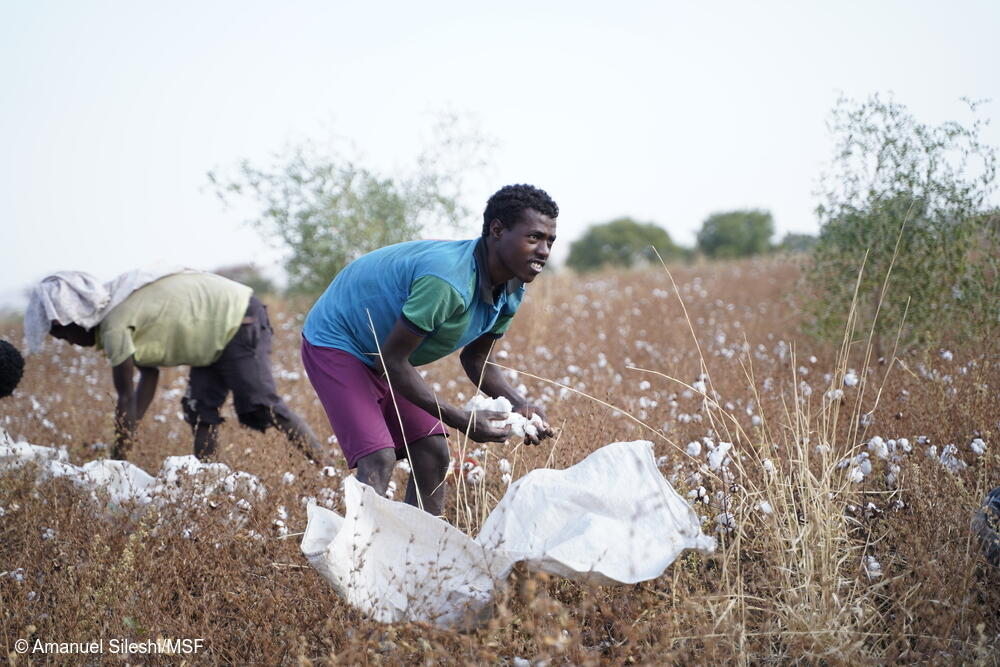 Alemu is one of the farmers picking cotton on a farm near Abdurafi. Workers who often work at night and will sleep in the fields are more exposed to the risks of kala-azar and snakebite.
Alemu is one of the farmers picking cotton on a farm near Abdurafi. Workers who often work at night and will sleep in the fields are more exposed to the risks of kala-azar and snakebite.9. Why are migrant workers more exposed?
Migrant workers often sleep in the fields, beneath trees, and without bed nets. Their work in the fields also often continues into the evening. This is why they are at very high risk of exposure to bites of mosquitoes as well as sandflies. Both vectors for malaria and kala azar tend to bite between dusk and dawn.
Once sick, most migrant workers do not have family support to fall back on, and many become destitute. They also have limited access to services such as free health care, as they are not residents of the area.
10. High prevalence of HIV
This young mostly male population is affected by a relatively high prevalence of HIV infection. The combination of these two diseases that severely weakens the immune system is a further challenge for effectively treating patients as it is almost impossible to cure. While a person with a healthy immune system treated for kala azar will develop an immunity against the disease that will last for many years, HIV co-infected people cannot generate this immunity so they will keep relapsing and eventually become unresponsive to treatment and die.
11. MSF’s health centre in Abdurafi unique space in kala azar research
To respond to the high mortality rate of HIV co-infected patients, over the past 20 years, MSF’s kala azar treatment centre in Abdurafi has become a unique and crucial space in research on management of co-infected patients. It is one of the very few places where treatment for kala azar is available and accessible, and where research has been advancing.
12. Research in Abdurafi leads to global policy change
Several studies carried out with research partners, such as the University of Gondar and the Drugs for Neglected Disease Initiative (DNDI) to try and improve the management and the treatment outcomes of HIV co-infected kala azar patients, resulted in global policy changes.
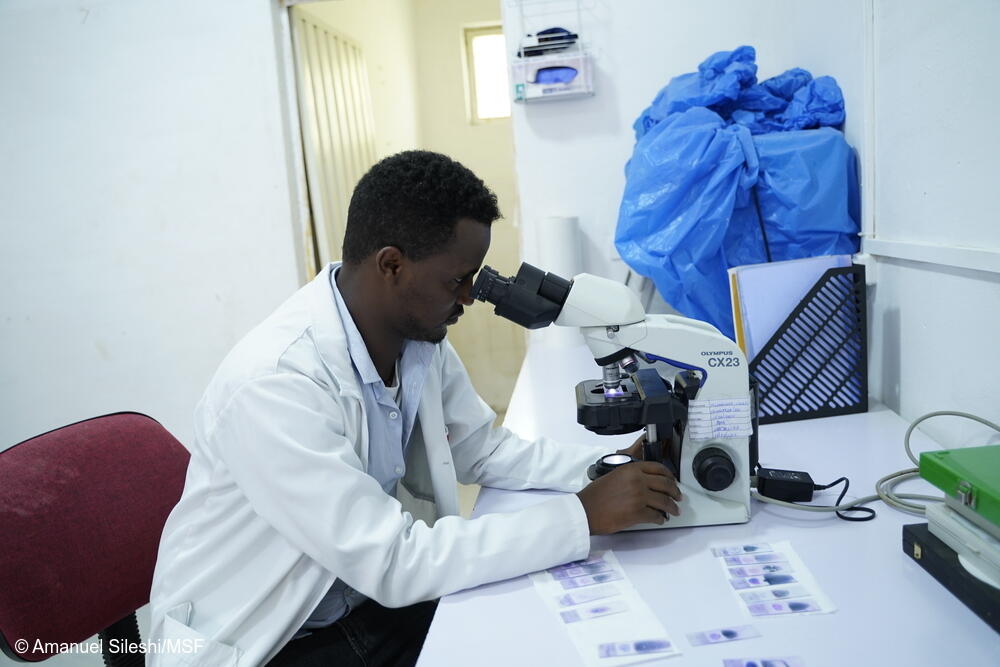 Fikre Ezezew, MSF lab technician is seen working at MSF’s Abdurafi health center that offers treatment to people affected by Kala-azar and victims of snakebite.
Fikre Ezezew, MSF lab technician is seen working at MSF’s Abdurafi health center that offers treatment to people affected by Kala-azar and victims of snakebite.
13. New drug combination with better treatment outcomes
Research resulted in the combination of two drugs that have a different mode of action to obtain a better treatment outcome for patients. The new treatment was shown to have an 88% efficacy rate compared to the previous standard treatment of 55% efficacy rate.
14. 7,000 people with kala azar treated in Abdurafi
Ethiopia is one of the countries heavily affected by kala azar, with thousands of cases reported annually. In these 20 years, in Abdurafi alone, we have treated more than 7,000 people with kala azar. Overall, in Ethiopia, we treated more than 15,000 people for kala azar.
15. Treatment of kala azar needs to be expanded
Treatment of kala azar, a disease that is complicated to diagnose, and complex and expensive to cure, needs to be expanded. Despite progress in reducing the global burden of kala azar, over the past 40 years an estimated 200,000 people with kala azar have died in East Africa due to lack of access to treatment with thousands of undetected cases. The persistent lack of cost-effective diagnostic tools and medicines produced by pharmaceutical companies are cutting people off from affordable treatment options.
16. Pharmaceutical companies must make cost-effective diagnostic tools more widely available
The manufacturer of the diagnostic test for kala azar has stopped production because of lack of commercial profitability. This is very likely to result in a rupture of this essential test globally.
While the knowledge on how to make the diagnostic tool has been transferred to another pharmaceutical company, the production and distribution of the test need to be fast-tracked to ensure that diagnosis and treatment of this neglected disease are not further delayed.
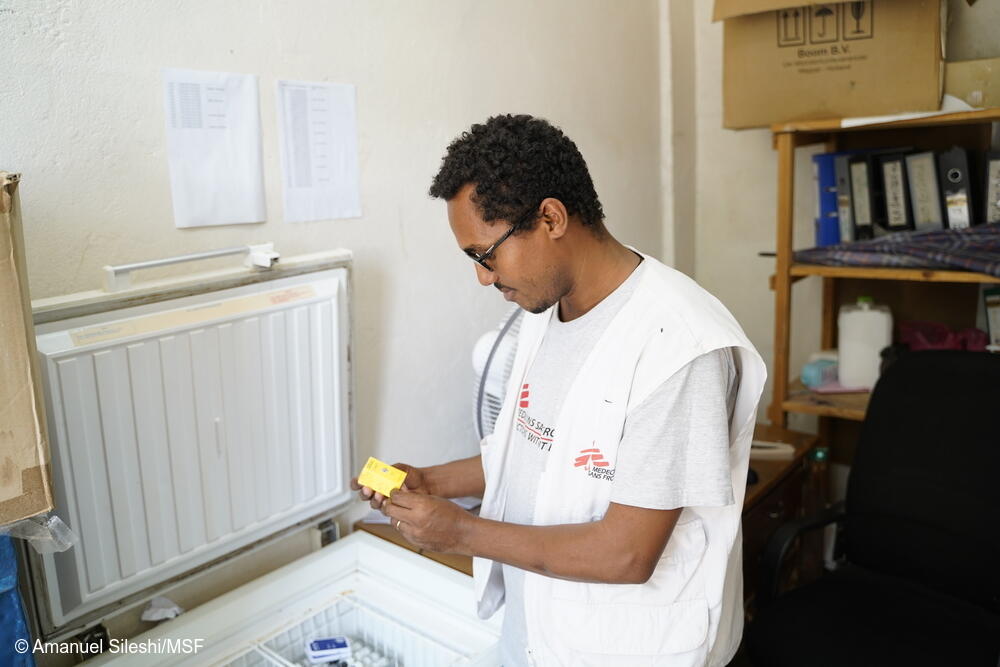 Kassaye Sisay, a clinical officer and MSF’s medical activity manager holds an antivenom vial.
Kassaye Sisay, a clinical officer and MSF’s medical activity manager holds an antivenom vial.
17. MSF in Abdurafi also provides treatment for snakebites
In 2014, MSF opened the only facility in the region offering free and comprehensive care to people with snakebites, including effective antivenom, which was either unavailable or unaffordable.
18. Snakebites, a neglected disease with serious complications on people if not treated
Between 2014 and 2022, MSF treated almost 5,000 people with snakebites. Victims are mainly seasonal agricultural workers and herders.
19. MSF staff memories of snake hunters
In 2018, an expert snake hunter contracted by MSF caught a snake. While showing and training the MSF team in Abdurafi on how to catch a snake and extract their venom, the snake bit him, injecting its venom. Fortunately, he was able to receive the lifesaving antivenom from MSF Abdurafi´s treatment centre.
20. MSF treats kala azar also in southern Ethiopia
MSF remains committed to providing these services in Abdurafi and in other areas of Ethiopia, such as the Omo Valley in southern Ethiopia where MSF teams are responding to the needs of an alarmingly high number of people infected by kala azar, and who would otherwise be without treatment options. Since the beginning of the year, MSF carried out more than 2,700 consultations and treated 122 patients with kala azar in the area.
(Project update from March 2023: https://msf.or.ke/en/magazine/we-dont-know-where-it-comes-it-kills-lot-people)
